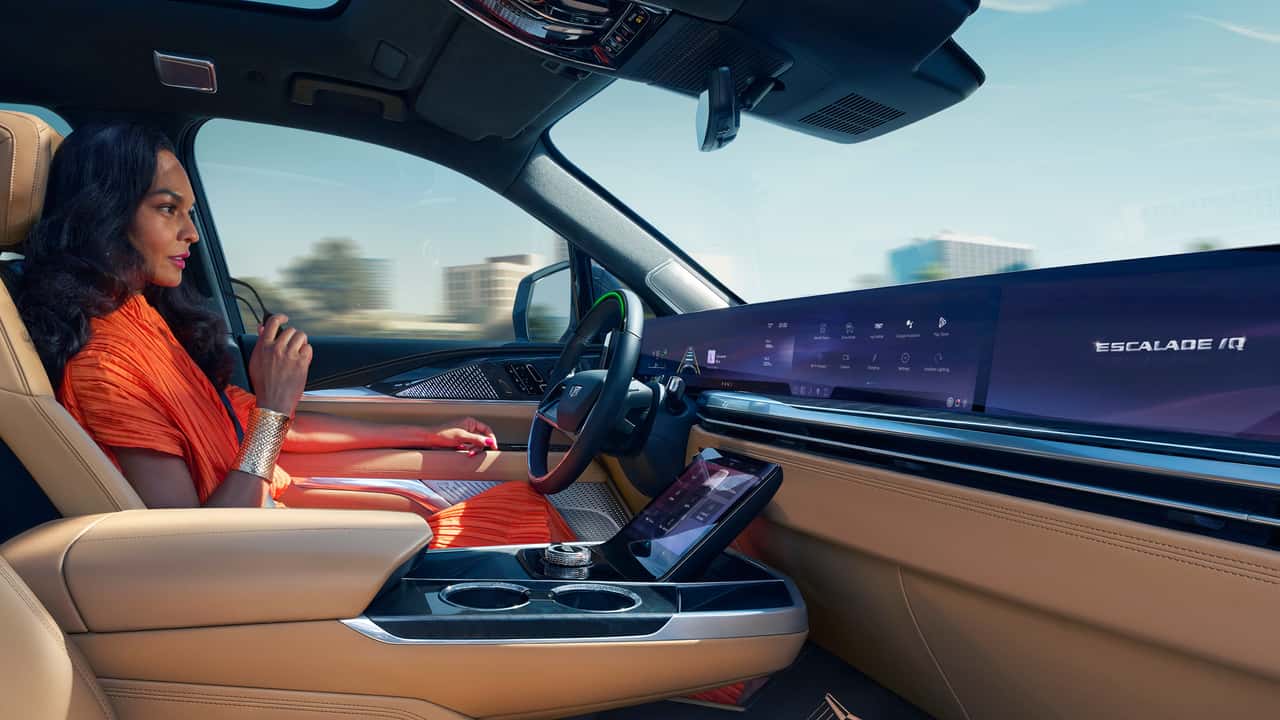- General Motors is working on making its Super Cruise advanced driving assistance system (ADAS) a truly hands-off, eyes-off solution.
- Currently, there’s only one Level 3-capable system on sale in the U.S., Mercedes-Benz’s Drive Pilot.
People have envisioned self-driving cars for decades, if not centuries, but the fact remains that today you still can’t walk into a showroom and buy a car that will drive you from point A to point B while you watch a movie or take a nap.
Enter General Motors. You know, that good-old American automaker that brought us gems like the GM EV1, Chevrolet Volt and–more recently–the stupendous GMC Hummer EV and Chevrolet Silverado EV range monster.
GM wants to bring truly hands-off, eyes-off driving to its customers in the United States, thus becoming the first American car manufacturer to do so on a large scale. According to Dave Richardson, Senior Vice President of Software and Services Engineering at GM, who spoke with TechCrunch for an extensive interview, the Detroit giant is working on transforming Super Cruise, its hands-off driving assistant, into a true Level 3 advanced driving assistance system (ADAS).
“Super Cruise, I think, is an industry-leading level 2 solution for hands-off, eyes-on,” Richardson told TechCrunch. “We’re looking aggressively to make that an L3 solution, where you don’t even have to look at the road anymore.”
As a reminder, Super Cruise works on several GM vehicles and is the only system in the United States that offers hands-free driving assistance while towing. It debuted in 2017 as the industry’s first hands-free ADAS, and by the end of 2025, it will be available on roughly 750,000 miles of roads in the U.S. and Canada, including rural and minor highways. It offers adaptive cruise control, lane centering and on-demand lane changes.
According to the Society of Automotive Engineers (SAE), a Level 2-capable vehicle can steer, accelerate and brake on its own, but the driver must always supervise it. That’s how Tesla’s Autopilot and Full Self-Driving (Supervised) systems are categorized, along with the vast majority of ADAS features offered by other automakers, including Ford’s BlueCruise, which recently got an update.

Super Cruise active on a Cadillac vehicle
Mercedes-Benz is the only brand that has a Level 3-capable advanced driving assistance system on sale today in the United States, but that can only be activated in certain cities, on certain freeways and only at up to 40 miles per hour (although the speed limit can be upped to 70 mph once federal and state laws permit.)
General Motors’ rep didn’t provide a timeline for the rollout of the updated Super Cruise and didn’t say how far development has progressed, but mentioned that it’s very important for the feature to be ready when customers gain access to it.
“If you don’t quite trust it, and it kicks you out, then it’s sort of like–the analogy I give sometimes is–you’re driving with your 15-year-old that’s just learning how to drive,” Richardson told TechCrunch. “You don’t really trust them, and it almost becomes a little bit more stressful.”
That’s the same approach as Mercedes-Benz, and the exact opposite of Tesla, which famously used its customers as beta testers for its FSD feature. The system even had a “Beta” label attached to it for much of its existence, before getting rebranded to Full Self-Driving (Supervised), meaning that the driver is still in charge, and not the car.
General Motors (GM) is paving the way for a future of autonomous driving with its Super Cruise technology. The automaker recently announced its intention to expand the capabilities of Super Cruise to provide hands-off, eyes-off driving assistance to drivers. This marks a significant step forward in the development of self-driving cars and underscores GM’s commitment to innovation and safety in the automotive industry.
Super Cruise is a driver assistance system that uses a combination of cameras, sensors, and GPS to enable hands-free driving on certain highways. The current iteration of Super Cruise requires drivers to keep their hands on the steering wheel and their eyes on the road at all times. However, GM is now working on a new version of the technology that will allow drivers to take their hands off the wheel and even look away from the road while the car is in autonomous mode.
This move by GM is a bold one, as it represents a departure from the industry standard of requiring drivers to remain engaged with the driving process even when using advanced driver assistance systems. By allowing drivers to go hands-off and eyes-off, GM is pushing the boundaries of what is possible with autonomous driving technology and setting a new benchmark for the industry.
Of course, safety remains a top priority for GM, and the company is taking a cautious and methodical approach to rolling out this new version of Super Cruise. GM is conducting extensive testing and validation to ensure that the technology is reliable and safe for drivers to use. The company is also working closely with regulatory agencies to ensure that the technology meets all necessary standards and requirements.
GM’s decision to pursue hands-off, eyes-off driving assistance with Super Cruise is a major milestone in the development of autonomous driving technology. It represents a significant leap forward in the quest to make self-driving cars a reality and demonstrates GM’s commitment to staying at the forefront of automotive innovation. As the automotive industry continues to evolve, GM is positioning itself as a leader in the development of autonomous driving technology, and Super Cruise is leading the way towards a future of safer, more efficient, and more enjoyable driving experiences.

